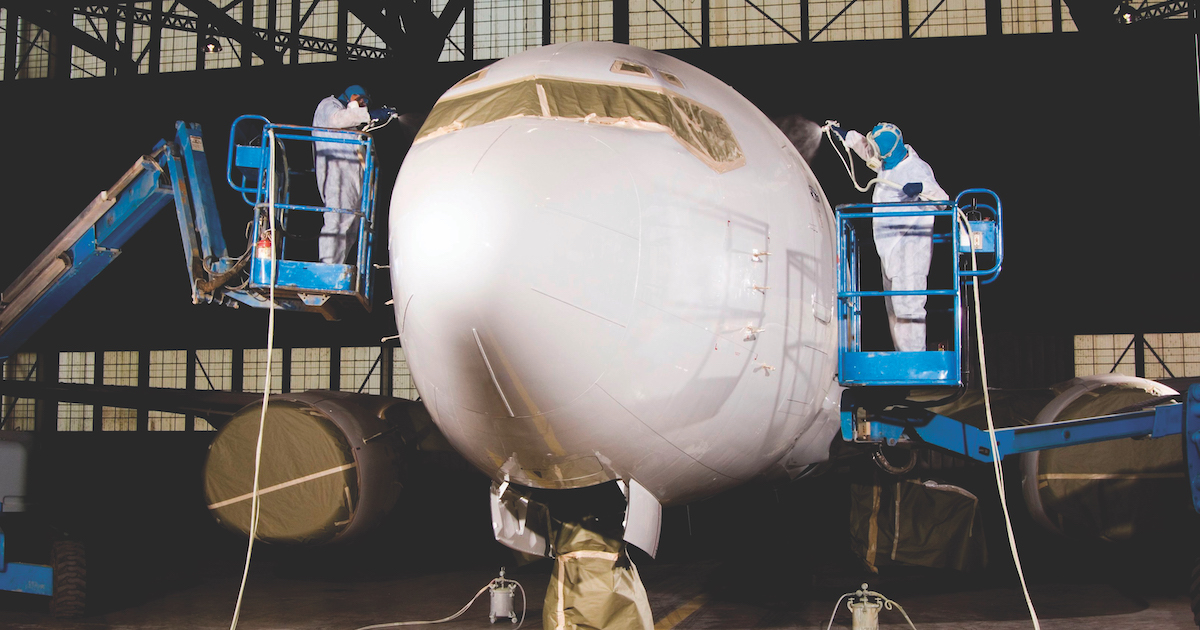
How to Ensure Aircraft Paint Quality with Automated Inspection Systems?
Share
In the realm of aircraft maintenance and aesthetics, ensuring impeccable paint quality is paramount. Tech professionals and enthusiasts alike recognize that the visual appeal of an aircraft is often the first impression it makes, but theres more beneath the surface, especially when it involves durability, safety, and efficiency. In this detailed article, we will delve into ensuring aircraft paint quality with automated inspection systems, exploring their technological advantages and the impacts they create in aviation.
The harmony between technology and aviation is crucial for today's aircraft manufacturers. With advancements in automated inspection systems, ensuring the quality of aircraft paint has evolved from manual practices to sophisticated technology-driven solutions. These systems not only boost production efficiency but also ensure compliance with strict safety standards.

The Importance of Aircraft Paint Quality
A well-painted aircraft is essential not only for aesthetics but also plays a vital role in protecting the structure against the elements. High-quality paint serves as a barrier against corrosion, UV rays, and other environmental factors. In the spirit of optimal performance, understanding how quality is maintained through automated inspections is crucial. Below are key aspects highlighting the necessity of top-notch aircraft paint quality:
- Safety: Imperfections in paint can lead to structural weaknesses, which can jeopardize airworthiness.
- Durability: High-quality paint ensures longevity, thus reducing maintenance costs and enhancing aircraft lifespan.
- Aesthetics: The visual appeal of an aircraft contributes to the airline's brand image.
- Compliance: Aircraft must adhere to stringent regulations, making quality essential for certification.
How Automated Inspection Systems Work
Automated inspection systems utilize a combination of advanced technologies such as machine learning, artificial intelligence (AI), and machine vision to assess paint quality comprehensively. Here's a closer look at how these systems operate:
1. Data Collection
These systems begin by gathering data through various sensors and cameras placed strategically around the aircraft. Information about surface texture, color consistency, and uniformity of coating is collected.
2. Image Analysis
Using sophisticated algorithms, the system analyzes the images captured. It identifies discrepancies, such as uneven application or imperfections, while offering real-time feedback for immediate rectification.
3. Reporting and Documentation
Automated systems generate comprehensive reports detailing the quality assessment, which can be invaluable for audits and compliance checks.
Benefits of Automated Inspection Systems
Integrating automated inspection systems in the aircraft painting process brings numerous benefits:
Enhanced Precision
With human error minimized, these systems deliver high precision in assessments, ensuring that even minor imperfections are detected.
Increased Efficiency
Automated inspections speed up the process of quality control, reducing the time spent on manual checks.
Cost-Effectiveness
While initial investment costs might be high, long-term savings in maintenance and improvements in paint quality can lead to significant cost reductions.
Consistency
Automated systems ensure uniformity in inspections, offering consistent results irrespective of changes in personnel.
Challenges of Implementing Automated Systems
Despite the advancements and benefits, transitioning to automated inspection systems can pose several challenges:
Initial Costs
The purchase and implementation of high-quality systems can be costly, which may deter some organizations, particularly smaller firms.
Training Requirements
Personnel must be trained to operate these systems, which may require a time investment and adaptation period.
Technology Limitations
No system is flawless; certain automated technologies may struggle with specific types of paint or environmental conditions.
Real-World Applications of Automated Inspection Systems
Several aerospace companies have already adopted automated inspection systems for paint quality assurance. A notable example is the utilization of advanced technologies in various aerospace manufacturing processes. The results have shown marked improvement in paint uniformity and outcomes from compliance audits. Furthermore, systems that leverage AI applications can quickly adapt to different paint types, showcasing flexibility.
Case Studies on Paint Quality Assurance
Industries such as automotive and aerospace are utilizing automated inspection systems with significant success.
1. Aerospace Industry
Companies like Sherwin-Williams have integrated AI solutions that aid in ensuring the consistency and reliability of paint applications.
2. Automotive Industry
In the automotive field, manufacturers are reducing inconsistencies in paint finishes by implementing machine vision technologies.
Future Trends in Automated Inspection
The future of automated inspection systems appears promising. As technology progresses, we can expect:
1. Enhanced AI Capabilities
Future systems will likely incorporate more sophisticated AI algorithms capable of performing predictive analytics.
2. Integration with IoT
Integrating inspection systems with the Internet of Things (IoT) will allow for greater real-time monitoring and reporting capabilities.
3. Increased Automation
Automation will extend beyond painting to encompass other maintenance aspects, further ensuring comprehensive quality control.
Conclusion
To summarize, ensuring aircraft paint quality with automated inspection systems presents a promising shift towards excellence in aviation maintenance. These innovations not only streamline the quality assurance process but also offer significant advantages in safety, cost-effectiveness, and compliance. As we stride forward into an era dominated by technology, the aviation industry stands to benefit greatly from the convergence of these advanced systems and practices.

FAQs
1. What are automated inspection systems?
Automated inspection systems utilize technology such as machine vision and AI to assess the quality of paint applications on aircraft and other entities.
2. How do automated systems ensure paint quality?
These systems analyze surface conditions, detect imperfections, and provide real-time feedback, thereby ensuring consistent and reliable paint quality.
3. Are automated inspection systems cost-effective?
While initial investments can be significant, the long-term savings due to decreased maintenance and improved quality typically outweigh these costs.
